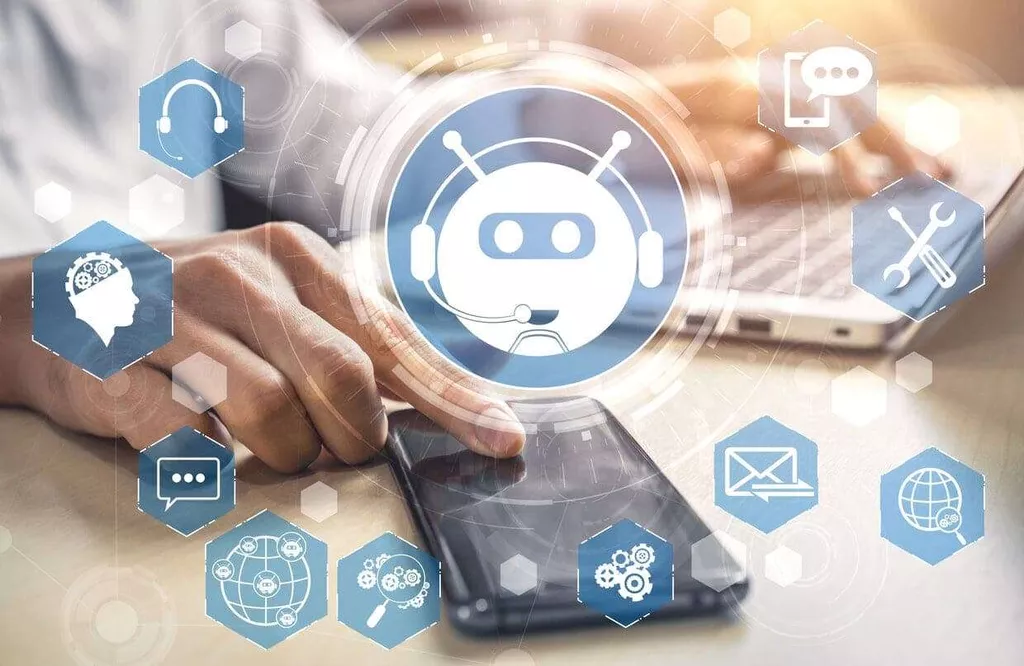Medical Chatbots Use Cases, Examples and Case Studies of Generative Conversational AI in Medicine and Health

Chatbots are unable to efficiently cope with these errors because of the lack of common sense and the inability to properly model real-world knowledge [105]. Another factor that contributes to errors and inaccurate predictions is the large, noisy data sets used to train modern models because large quantities of high-quality, representative data are often unavailable [58]. In addition to the concern of accuracy and validity, addressing clinical utility and effectiveness of improving healthcare chatbot use cases patients’ quality of life is just as important. With the increased use of diagnostic chatbots, the risk of overconfidence and overtreatment may cause more harm than benefit [99]. There is still clear potential for improved decision-making, as diagnostic deep learning algorithms were found to be equivalent to health care professionals in classifying diseases in terms of accuracy [106]. These issues presented above all raise the question of who is legally liable for medical errors.
Saba Clinics, Saudi Arabia’s largest multi-speciality skincare and wellness center used WhatsApp chatbot to collect feedback. Furthermore, since you can integrate the bot with your internal hospital system, the bot can seamlessly transfer the data into it. It saves you the hassle of manually adding data and keeping physical copies that you fetch whenever there’s a returning patient.
Facilitating post-care follow-ups
Projections indicate that the number of voice chatbots is expected to exceed 8 billion by 2023. Once you choose your chatbot and set it up, make sure to check all the features the bot offers. This way, you will get more usage out of it and have more tasks taken off your shoulders. And, in the long run, you will be much happier with your investment seeing the great results that the bot brings your company. This is one of the chatbot use cases in banking that helps your bank be transparent, and your clients stay on top of their finances. Chatbots can check account details, as well as see full reports about the user’s account.
- The journey with healthcare chatbots is just beginning, and the possibilities are as vast as they are promising.
- This is because any anomaly in transactions could cause great damage to the client as well as the institute providing the financial services.
- Thus, their key feature is language and speech recognition, that is, natural language processing (NLP), which enables them to understand, to a certain extent, the language of the user (Gentner et al. 2020, p. 2).
Also, Accenture research shows that digital users prefer messaging platforms with a text and voice-based interface. Your business can reach a wider audience, segment your visitors, and persuade consumers to shop with you through suggested products and sales advertisements. Chatbots can also track interests to provide proper notification based on the individual. They can encourage your buyers to complete surveys after chatting with your support or purchasing a product.
How to Leverage Conversational Chatbots to 10x Your E-commerce Sales?
An interesting use case—mHero33,34—involves facilitating coordination between distributed frontline healthcare workers and health organizations or the Ministry of Health in areas of poor technology infrastructure (1 case). The chatbot can gather real-time data from frontline workers to enable provision of essential support, answer their questions, and provide them with real-time information. Originally developed in response to the Ebola outbreak to reach frontline workers with basic text and audio messages,33 it can now also be implemented in WhatsApp and Facebook messenger. While many chatbots leverage risk-assessment criteria from official sources (WHO, CDC, or other government health agency), the questions asked vary significantly across chatbots, and as does the order in which they are asked. Some ask general questions about exposure and symptoms (e.g., Case 7), whereas others also check for preexisting conditions to assess high-risk users (e.g., Case 1). Based on the assessed risk, the chatbot makes behavioral recommendations (e.g., self-monitor, quarantine, etc.).
This relieving of pressure on contact centres is especially important in the present COVID-19 situation (Dennis et al. 2020, p. 1727), thus making chatbots cost-effective. However, one of the key elements for bots to be trustworthy—that is, the ability to function effectively with a patient—‘is that people believe that they have expertise’ (Nordheim et al. 2019). A survey on Omaolo (Pynnönen et al. 2020, p. 25) concluded that users were more likely to be in compliance with and more trustworthy about HCP decisions. In the healthcare field, in addition to the above-mentioned Woebot, there are numerous chatbots, such as Your.MD, HealthTap, Cancer Chatbot, VitaminBot, Babylon Health, Safedrugbot and Ada Health (Palanica et al. 2019). The chatbot is available in Finnish, Swedish and English, and it currently administers 17 separate symptom assessments.
AI Digital Solutions
We searched PubMed/MEDLINE, Web of Knowledge, and Google Scholar in October 2020 and performed a follow-up search in July 2021. We screened articles based on their abstracts and keywords in their text, reviewed potentially relevant articles, and screened their references to (a) assess whether the article met inclusion criteria and (b) identify additional articles. Chatbots, their use cases, and chatbot design characteristics were extracted from the articles and information from other sources and by accessing those chatbots that were publicly accessible. Chatbots can also be used to send automated reminders about taking medication, filling prescriptions, and upcoming healthcare checkups.
For example, a chatbot called Iris can schedule and cancel appointments, receive lab results, and send follow-up reminders. A chatbot designed specifically for the needs of a medical center could allow patients to book their appointments in less than a minute without ever having to get in touch with a human agent or receptionist. Chatbots can provide medical information to patients and medical professionals alike. A chatbot can be programmed to answer common questions about symptoms and treatments and even conduct preliminary health diagnoses based on user input.
If you’re considering the use of chatbots for your company, take the time to explore their diverse applications across various industries and business functions to identify the most fitting solution for your specific needs. Also, make sure that you check customer feedback where shoppers tell you what they want from your bot. If the answer is yes, make changes to your bot to improve the customer satisfaction of the users. Every company has different needs and requirements, so it’s natural that there isn’t a one-fits-all service provider for every industry. Do your research before deciding on the chatbot platform and check if the functionality of the bot matches what you want the virtual assistant to help you with.
QliqSOFT Announces Healthcare Chatbot that Solves Patient Engagement, Instantly. – Business Wire
QliqSOFT Announces Healthcare Chatbot that Solves Patient Engagement, Instantly..
Posted: Thu, 09 Jan 2020 08:00:00 GMT [source]
Researchers will assess the functionality of the interface, which enables people with quadriplegia to control devices with their thoughts, according to the company’s website. But, these aren’t all the ways you can use your bots as there are hundreds of those depending on your company’s needs. And no matter how many employees you have, they will never be able to achieve that on such a big scale.
Follow Us
Teaching your new buyers how to utilize your tool is very important in turning them into loyal customers. Think about it—unless a person understands how your service works, they won’t use it. Now you’re curious about them and the question “what are chatbots used for, anyway?
We acknowledge the difficulty in identifying the nature of systemic change and looking at its complex network-like structure in the functioning of health organisations. Nonetheless, we consider it important to raise this point when talking about chatbots and their potential breakthrough in health care. We suggest that new ethico-political approaches are required in professional ethics because chatbots can become entangled with clinical practices in complex ways. It is difficult to assess the legitimacy of particular applications and their underlying business interests using concepts drawn from universal AI ethics or traditional professional ethics inherited from bioethics. Insufficient consideration regarding the implementation of chatbots in health care can lead to poor professional practices, creating long-term side effects and harm for professionals and their patients.
The importance of chatbots in healthcare
Obviously, chatbots cannot replace therapists and physicians, but they can provide a trusted and unbiased go-to place for the patient around-the-clock. It conducts basic activities like asking about the symptoms, recommending wellness programs, and tracking behavior or weight changes. Healthcare Chatbot is an AI-powered software that uses machine learning algorithms or computer programs to interact with leads in auditory or textual modes. The majority of our chatbots focused on risk assessment or information dissemination and about half involved multiple use cases, mostly combining risk assessment and information dissemination together or with other use cases.
Concerns over the unknown and unintelligible “black boxes” of ML have limited the adoption of NLP-driven chatbot interventions by the medical community, despite the potential they have in increasing and improving access to healthcare. Further, it is unclear how the performance of NLP-driven chatbots should be assessed. The framework proposed as well as the insights gleaned from the review of commercially available healthbot apps will facilitate a greater understanding of how such apps should be evaluated.

Maintaining autonomy and living in a self-sustaining way within their home environment is especially important for older populations [79]. Implementation of chatbots may address some of these concerns, such as reducing the burden on the health care system and supporting independent living. Even after addressing these issues and establishing the safety or efficacy of chatbots, human elements in health care will not be replaceable. Therefore, chatbots have the potential to be integrated into clinical practice by working alongside health practitioners to reduce costs, refine workflow efficiencies, and improve patient outcomes. Other applications in pandemic support, global health, and education are yet to be fully explored.
- Also, Accenture research shows that digital users prefer messaging platforms with a text and voice-based interface.
- This was typically done by providing “button-push” options for user-indicated responses.
- Whenever team members need to check the availability or the status of equipment, they can simply ask the bot.
- Chatbots can be used to automate healthcare processes and smooth out workflow, reducing manual labor and freeing up time for medical staff to focus on more complex tasks and procedures.
With chatbots in healthcare, doctors can now access this data without asking their patients questions directly. This enables them to make better decisions about what treatment options they should take while also giving them a better understanding of what is happening with each patient’s overall health situation to provide better healthcare. UK health authorities have recommended apps, such as Woebot, for those suffering from depression and anxiety (Jesus 2019). Pasquale (2020, p. 46) pondered, ironically, that cheap mental health apps are a godsend for health systems pressed by austerity cuts, such as Britain’s National Health Service. Unfortunately, according to a study in the journal Evidence Based Mental Health, the true clinical value of most apps was ‘impossible to determine’.


